Pipe welding machines & cutting machines are necessary for metal pipe procedure. The pipe cutting machine can cut plastic pipe fittings into different angles according to the needs of customers. The cutting angle is up to 67 degrees, using the Swedish saw blade and limited switch for safety. They are usually used for the production of Bends, Tees, Cross, Y welding fittings, and other fabrications. Pipe welding machines are suitable for HDPE/PP pipes and fittings, with high-quality aluminum casting without compromising strength and performance, high quality design provides for welding on the work site and at the factory.
Plaswelding is a professional industrial welding machine manufacturer & supplier that can provide various kinds of reliable plastic pipe welding machines and cutting machines. As one of the leading plastic welding machine suppliers in China, we have our own factory and own a wide range of plastic pipe welders for sale including plastic pipe welders, PVC pipe welding machines for pipes, etc. If you want to get more information, please contact us now and get an attractive plastic welding machine price.
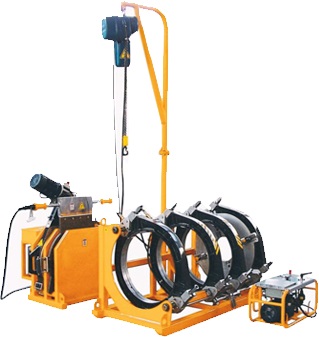
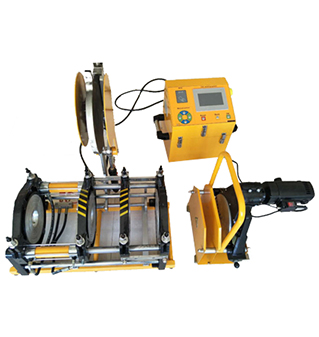
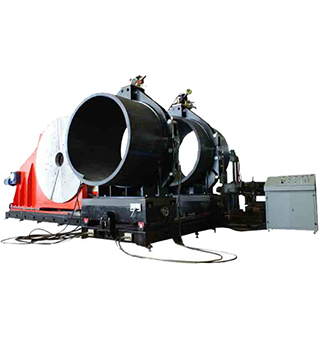
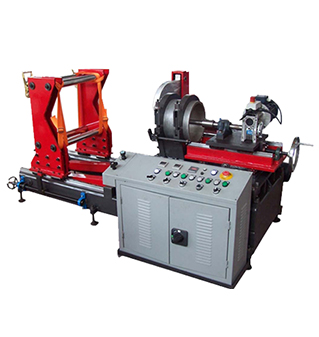
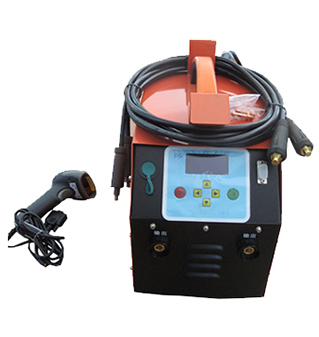
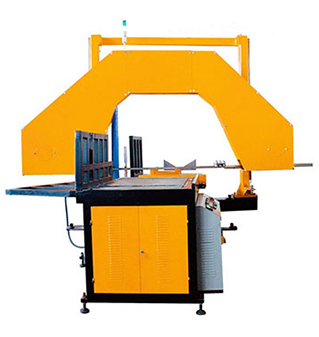
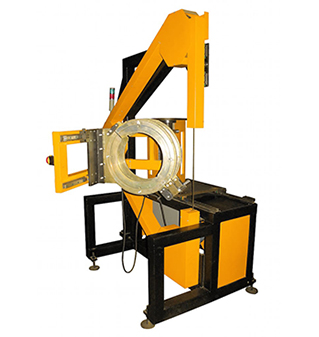
The plastic pipe welding machine is used to weld pipes made from PE, PP, and PVDF and can not be used to weld material without the description here, otherwise, the machine may be damaged or some accident may be resulted.
Polyethylene is a thermoplastic resin prepared by polymerization of ethylene. In the industrial field, it also includes the copolymer of ethylene and some types of α-olefin. Polyethylene is odorless, non-toxic, feels like wax, and has excellent low-temperature resistance, and good chemical stability, it can also withstand the erosion of most acids and bases. Polyethylene is insoluble in general solvents at room temperature, and it has low water absorption and excellent electrical insulation.
Polypropylene is a polymer formed by the addition polymerization of propylene. It is a white waxy material with a transparent and light appearance. Its melting point is 189 ℃ and the temperature range is -30mm 140 ℃. It is widely used in the production of fiber products such as clothing, blankets, medical devices, automobiles, chemical containers, etc., as well as food and drug packaging.
PVDF, also known as fluoroplastic, is a kind of high-crystallization, high-performance geothermal plastic, and is suitable for a wide range of temperatures, and provides full security for high-temperature applications. Because of its good anti-ultraviolet properties, even if installed outdoors, ultraviolet radiation does not affect its life and material properties at all.
At last, plaswelding is a leading supplier of professional plastic pipe welding machines, catering to the needs of various industries. With a wide range of plastic pipe welders for sale, we offer reliable and efficient solutions for welding plastic pipes of different sizes and materials.
As one of the top plastic pipe welding machine suppliers in the market, Plaswelding is committed to providing high-quality products that meet the diverse needs of our customers. Our machines are designed and manufactured to the highest standards, ensuring they can withstand the rigors of industrial use.
As plastic pipe welding machines manufacturers, we use the latest technology and the best materials to produce our products. Our machines are easy to operate and require minimal maintenance, making them ideal for use in a range of industries, including construction, plumbing, and manufacturing.
At Plaswelding, we take pride in our ability to offer reliable and efficient solutions to our customers. Whether you need a small portable plastic pipe welding machine or a large industrial model, we have the expertise and resources to deliver the perfect solution for your needs. Contact us today to learn more about our plastic pipe welding machine manufacturers and how we can help you find the right product for your business.
Before welding, you should first check if the material, diameter, and wall thickness are in the required conditions. Secondly, check if there are scratches or fissures on the surface of pipes/fittings.
Clean the inside and outside surfaces of pipe ends that are to be welded.
Place the pipes/fittings in inserts of the frame. The pipe out of the basic framework should be supported by the same central axial of clamps. Fasten the screws of clamps to fix the pipes/fittings.
Test the drag pressure: open the pressure regulation valve completely, lock the swing check valve tightly and then push forward the direction valve meanwhile adjusting the pressure regulation valve.
Open the pressure regulation valve completely, lock the swing check valve tightly and then push forward the direction valve meanwhile adjust the pressure regulation valve to set the system pressure equal to drag pressure and add butting pressure.
Separate the pipes/fittings end after turning the swing check valve in an anti-clockwise direction to relieve the pressure to the lowest.
Close the pipes/fitting ends and check their alignment of them. The maximal misalignment should not exceed 10% of the wall thickness, and it could be improved by loosening or tightening the screws of clamps.
Clear the dust or slit on the surface of the heating plate, and put the heating plate between the pipe ends after it reaches the required temperature. Close the pipes/fittings end.
Turn the swing check valve anti-clockwise to reduce the pressure (not more than drag pressure) and turn the swing check valve in a clockwise direction to the end. Press the button “T2”.
Open the frame and take out the heating plate and close two melting ends as quickly as possible.
Keep the bar of direction valve in the close position for 2~3 minutes, put the bar of direction valve in the middle position, and press the button (“T5”) to count the cooling time until it is over.
Plastic welding refers to the connection method that the contact surfaces of two plastic parts are fused at the same time by heating so that they are combined into a whole. Only applicable to thermoplastic connections. Welding rods can be used or not used during welding. When using the welding rod, the end face of the end to be welded shall be made into a fixed shape (such as U-shaped, X-shaped, etc.) joint, and the molten body of the welding rod drips into the joint, and the two welded parts are connected as a whole; When the welding rod is not used, the welding surface shall be heated and melted, and then the vertical pressure shall be applied to the welded surface until it is tightly fused.
The so-called fusion welding refers to the melting of the welded joint under the action of high temperature during the welding process. Since the welded parts are closely attached together, under the action of temperature field, gravity, etc., without pressure, the molten liquid melted by the two workpieces will mix. After the temperature decreases, the molten part condenses, and the two workpieces are firmly welded together to complete the welding method.
Plastic pipe welding machines are essential tools for joining plastic pipes of various sizes and materials. These machines use heat to melt the plastic pipes and then join them together, creating a strong and durable bond. There are various types of plastic pipe welding machines available in the market, including PVC pipe welding machines, which are designed specifically for welding PVC pipes.
One of the primary benefits of using a plastic pipe welding machine is that it ensures a secure and reliable joint between the pipes. This is particularly important in applications where the pipes are carrying hazardous or sensitive materials, such as in the chemical industry or in water treatment plants. Additionally, using a welding machine helps to ensure that the pipes are joined in a precise and accurate manner, reducing the likelihood of leaks or other issues that could compromise the integrity of the system.
When considering the use of a plastic pipe welding machine, it is important to take into account the cost of the equipment. The price of plastic pipe welding machines can vary widely, depending on factors such as the size and type of the machine, as well as its features and capabilities. PVC pipe welding machine prices, for example, may be different from those for other types of plastic pipe welding machines.
Those who are interested in purchasing a plastic pipe welding machine for sale may also want to consider the long-term cost savings that can be achieved through the use of this equipment. By creating strong and reliable joints, welding machines can help to reduce the need for frequent repairs or replacements of pipes and other system components, ultimately saving time and money.
Overall, the importance of using a plastic pipe welding machine cannot be overstated. Whether you are working in the chemical industry, water treatment, or another field that relies on plastic pipes, investing in a high-quality machine can help to ensure the safety and reliability of your system, while also providing significant cost savings over time. When considering the purchase of a plastic pipe welding machine, it is important to take into account factors such as the plastic pipe welding machine price, pvc pipe welding machine price, plastic pipe welding machine for sale, and pvc pipe heating machine price, in order to find the best option for your specific needs and budget.
